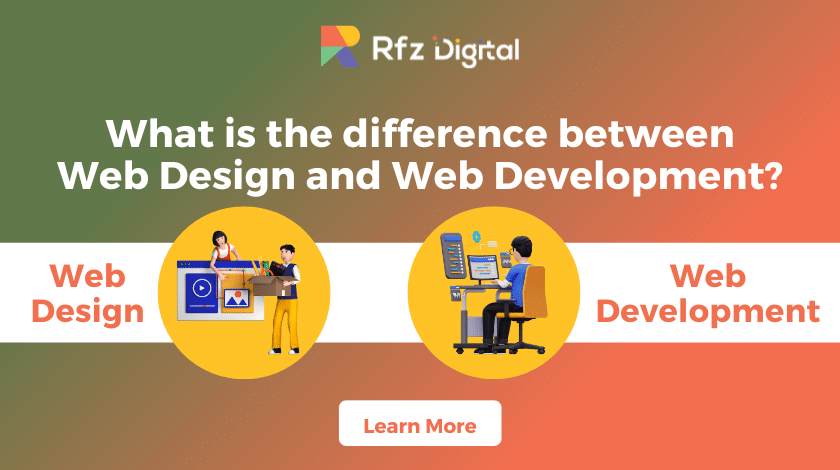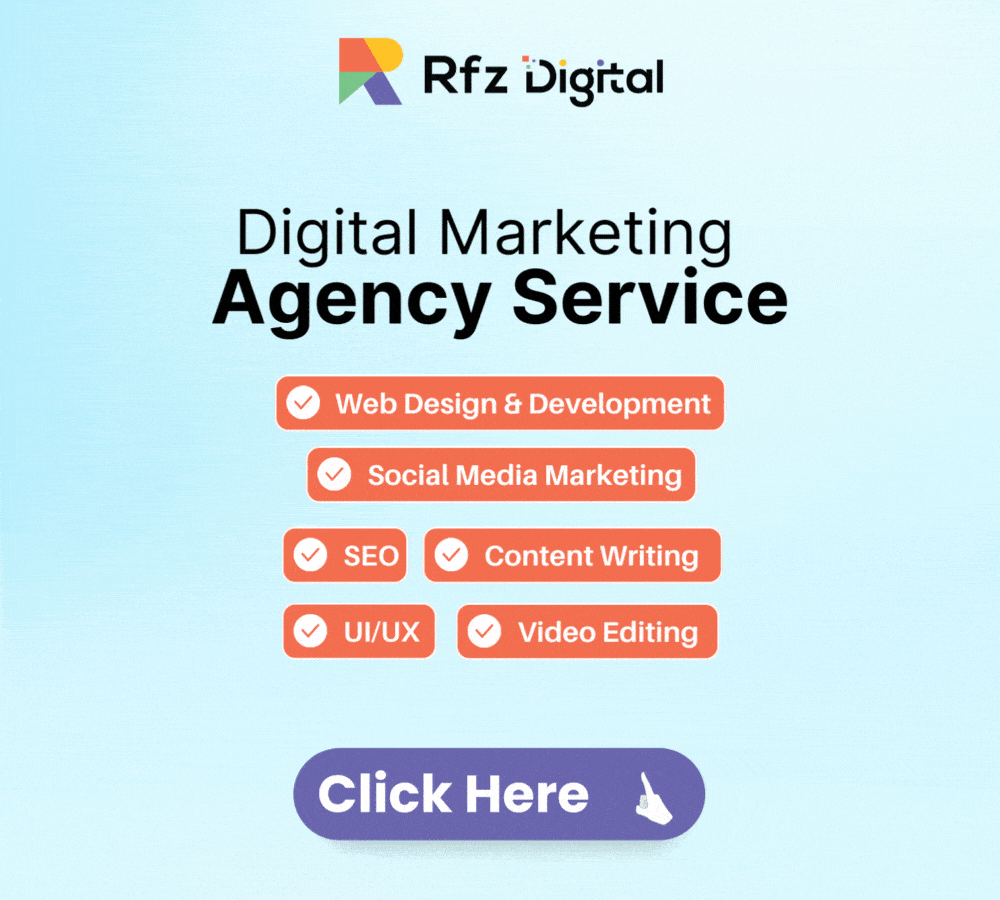“What is the difference between web designing and web development?” This question often comes up when discussing the creation of websites. While they work closely together, web designing and web development involve different aspects of website creation.
Web designing is all about how the website looks and how users interact with it. It is the job of a web designer to create the layout, choose colors and fonts, and think about the overall design. They focus on making the site visually appealing and user-friendly. On the other hand, web development is about turning these designs into a working website. It involves writing code and developing the functionality that makes the website operate. Web developers use programming languages like HTML, CSS, and JavaScript to build the structure of the site.
While designers concentrate on the look and feel, developers focus on making it all work smoothly. So, while web designers and web developers often work together to create a website, their roles are quite distinct. Let’s dig into this basic guide by Rfz Digital, who has expertise in both domains of web design and web development.

Table of Contents
ToggleDifference Between Web Designing and Web Development?
| Web Design | Web Development |
| Focuses on Aesthetic | Focuses on Functionality |
| Web designing is about creating a visually appealing and user-friendly interface. Designers work on layout, color schemes, typography, and overall visual aesthetics. | Web development is concerned with making the design functional. Developers write code to build and maintain the core structure of the website. |
| Uses Design Tools | Uses Programming Languages |
| Designers typically use tools like Adobe Photoshop, Sketch, and Figma for creating website layouts and graphic elements. | Developers use programming languages like HTML, CSS, JavaScript, PHP, and frameworks to build and implement website functionality. |
| Focus on User Experience | Focus on Technical Performance |
| Web designers concentrate on enhancing user experience through intuitive and engaging designs. They ensure the site is easy to navigate and aesthetically pleasing. | Developers focus on the technical aspects, such as website speed, scalability, and ensuring all functionalities work as intended. |
| Responsive Design | Server Management and Backend Development |
| Designers create responsive designs that adapt to different screen sizes, ensuring a consistent experience across devices. | Developers work on server management, databases, and backend logic to ensure the site functions correctly and efficiently. |
| Prototyping and Wireframing | Application of Algorithms and Data Structures |
| Designers use wireframes and prototypes to lay out and repeat the website’s structure and user flow before finalizing the design. | Developers apply algorithms and data structures to optimize website performance and solve complex computational problems. |
| Focus on Branding Elements | Creating and Managing Databases |
| Web designers incorporate branding elements like logos, color schemes, and typography to maintain brand consistency across the website. | Developers are responsible for creating, managing, and maintaining databases that store website data efficiently. |
| Involves User Research | Implementing Security Measures |
| Designers conduct user research to understand the target audience’s needs and preferences, which influences the design process. | Developers implement security measures to protect the website from cyber threats and ensure data integrity. |
| Creative and Artistic Skills | Logical and Analytical Skills |
| Web designing requires a high level of creativity and artistic skill to create visually appealing designs. | Web development demands strong logical and analytical skills to solve complex coding challenges and optimize website functionality. |
| Accessibility Design | Building APIs and Integrations |
| Designers ensure the website is accessible to all users, including those with disabilities, adhering to accessibility standards. | Developers work on building APIs (Application Programming Interfaces) and integrating third-party services or applications. |
| Mastery of Color Theory and Typography | Proficiency in Coding Standards and Best Practices |
| Designers need a deep understanding of color theory and typography to create designs that are both beautiful and effective. | Developers need to be more proficient in coding standards and best practices to write clean, maintainable, and efficient code. |
| Interactive Design Elements | Implementation of Complex Features and Functionalities |
| Web designers focus on creating interactive elements like buttons, sliders, and transitions that enhance the user’s interaction with the website. | Web developers implement complex functionalities like e-commerce capabilities, user account creation, and custom plugins. |
| Adherence to Design Principles | Code Testing and Debugging |
| Designers must follow the fundamental design principles, ensuring that the website is not only aesthetically pleasing but also coherent and intuitive. | Developers are responsible for testing the code for bugs and errors, ensuring that the website runs smoothly across different platforms. |
| Design Mockups and Concepts | Application Scalability and Maintenance |
| Designers create mockups and concepts that serve as a blueprint for the final design, allowing for client feedback and adjustments before development begins. | Developers focus on the scalability of the application, ensuring it can handle increased load and traffic, and perform regular maintenance. |
| Visual Content Creation | Server-Side Scripting |
| Designers are often involved in creating visual content like images and videos, which are integral to the website’s overall look and feel. | Developers handle server-side scripting, which is crucial for the behind-the-scenes functionality of the website. |
| Typography and Readability | API Development and Management |
| Designers prioritize typography and readability, ensuring that the text is both aesthetically integrated and easy to read. | Developers may be involved in developing and managing APIs, allowing different software systems to communicate with each other. |
| Design Consistency | Implementing Data Encryption and Transactions |
| Web designers ensure that the design is consistent across all pages and interfaces, maintaining a uniform look and feel throughout the site. | Developers implement data encryption and secure transactions, which are crucial for websites handling sensitive user information. |
| User Flow and Storyboarding | Building and Managing Content Management Systems (CMS) |
| Designers map out the user flow and storyboard the user’s journey to create a logical and intuitive navigation experience. | Developers often build and manage CMS platforms, allowing non-technical users to easily update and manage website content. |
| Design Trends and Innovation | Cloud Computing Integration |
| Designers need to stay updated with the latest design trends and innovations to ensure the website looks modern and engaging. | Developers integrate cloud computing solutions to enhance storage capacity, scalability, and website performance. |
| User-Centric Design Decisions | Building Custom Plugins and Extensions |
| Designers make decisions based on user needs and preferences, focusing on creating a user-centric design that enhances usability and satisfaction. | Developers create custom plugins and extensions to add specific functionalities to the website that are not available out-of-the-box. |
| Balancing Aesthetics with Usability | Optimizing Site Performance and Load Times |
| Web designers balance aesthetic elements with usability, ensuring that the site is not only visually appealing but also easy to use. | Web developers work on optimizing site performance, reducing load times, and ensuring that the site runs efficiently on all devices. |

What are the 3 types of web design?
Web design is an initial and one of the most important steps. Following are the 3 types of web design
Static Web Design
Description:
Static web design refers to websites that have fixed content. Each page is coded in HTML and displays the same content to every visitor. Static websites are typically written in plain HTML and CSS, and the content does not change unless it is manually updated by a web developer.
Advantages:
They are simpler to create and host, as they require less coding and no database or complex backend solutions. They load faster and are less vulnerable to security risks since they do not involve dynamic content recovery. This makes them ideal for small websites with a limited number of pages and content that doesn’t need regular updates.
Use Cases:
Static web design is best suited for informational websites, such as portfolios, digital resumes, small business websites, and landing pages where the primary goal is to provide consistent information over time.
2. Dynamic Web Design
Description:
Dynamic web design allows for real-time content updates and interactive features. These websites use server-side programming languages like PHP, JavaScript, or ASP.NET. The content of dynamic websites can change based on user interaction, time of day, viewer’s location, and other factors.
Advantages:
Dynamic websites are highly functional, allowing for personalized user experiences, database integration, and content management systems (CMS) like WordPress. They are ideal for handling complex tasks, such as user accounts, forums, and data-rich applications.
Use Cases:
Dynamic web design is suitable for large websites requiring regular content updates, such as news sites, blogs, e-commerce platforms, social networking sites, and educational platforms. They offer a more interactive and engaging experience for the user.

3. eCommerce Web Design
Description:
eCommerce web design is specifically made for creating online stores and business platforms. These websites mix functionalities necessary for conducting business online, such as product catalogs, shopping carts, checkout processes, and payment gateways.
Advantages:
eCommerce web designs are optimized for online sales, providing tools for inventory management, customer service, and marketing. They often incorporate elements of both static and dynamic design, with a strong focus on user experience, security, and mobile responsiveness.
Use Cases:
eCommerce web design is essential for any business looking to sell products or services online. From small boutique stores to large online retailers, eCommerce websites cater to a wide range of industries and can be scaled according to business size and customer base.
Does web design need coding?
Certainly! In web design, whether you need to know how to code depends on what kind of website you are making. For simple websites, you don’t need to code. There are easy-to-use tools like Wix or WordPress that let you build a website by just dragging and dropping things where you want them.
But, even with these tools, knowing a little bit of HTML and CSS helps add your special touches. If you want to make more unique or complex websites, then coding becomes important. Knowing languages like HTML, CSS, and JavaScript helps you create custom designs and cool features.
For websites that change or have interactive parts, like a blog or a shopping site, you need deeper coding skills. In big projects, web designers often work with web developers. Designers focus on how the website looks, while developers do the coding part. But even here, if designers understand some coding, it helps them work better with developers. So, if you are into web design, learning to code can be useful. It lets you do more with your designs and can help you in your career. Or if you have any confusion, you can ask Rfz Digital anytime.
Is Web Development and Website Development the Same?

Web development and website development are terms that are often used interchangeably, and they essentially mean the same thing. They both refer to the process of creating, building and maintaining websites.
This process includes several key aspects:
Web design, which focuses on the visual and interactive elements of a website, front-end development, which involves coding the parts of the website that users see and interact with, using languages like HTML, CSS, and JavaScript, and back-end development, which deals with the server-side of the website, involving the server, databases, and application logic that power the website’s functionality.
Some professionals specialize in full-stack development, which combines both front-end and back-end skills, enabling them to work on all aspects of a website. Additionally, web development encompasses ongoing tasks such as website maintenance and updates to ensure smooth operation and security.
Overall, both web development and website development describe the comprehensive process of creating and managing websites, and Rfz Digital know how to cover everything from the layout and design to the underlying coding and server management.
Is Web Development Just Coding?
Web development is more than just coding. While coding is a fundamental part of it, web development also involves understanding user needs, planning the website’s structure, and ensuring it works well on various devices and browsers. It includes designing a user-friendly interface, creating a logical layout, and sometimes managing the content that goes on the site.
Additionally, web developers often work on fixing bugs, optimizing website performance, and ensuring the site is secure from cyber threats. So, while coding is essential, web development is a broader field that requires a mix of technical, creative, and problem-solving skills.
Is HTML Part of Web Development?
Yes, HTML (Hypertext Markup Language) is a fundamental part of web development. It is the standard markup language used to create and structure content on the web. HTML forms the backbone of all websites, providing the basic structure and elements such as headings, paragraphs, links, and images.
It is the foundation upon which other technologies like CSS (Cascading Style Sheets) and JavaScript are built to enhance the design (styling) and functionality (interactivity) of websites. Any web development process, whether it is creating a simple static page or a complex web application, typically starts with HTML.
Which is Better Web Designer or a Web Developer?

Neither web designers nor web developers are “better”, they are complementary roles that are both vital in the process of website creation and maintenance.
| Web Designer | Web Developer |
| Focus Area | |
| Visual aspect and user experience of a website | Building and maintaining the technical side of a website |
| Skill Set | |
| Creativity in design, proficiency in design software (e.g., Adobe Photoshop, Illustrator), understanding of color theory, typography, and layout | Proficiency in programming languages (HTML, CSS, JavaScript, possibly server-side languages like PHP, Ruby) |
| Tools Used | |
| Graphic design software, wireframing tools, prototype design tools | Code editors, version control systems, development frameworks |
| Output | |
| Design concepts, mockups, and prototypes | The functioning website with implemented interactivity and cross-browser functionality |
| Problem-Solving Approach | |
| Creative solutions related to user experience and visual appeal | Logical solutions related to functionality, performance, and debugging |
| Career Path Evolution | |
| Can evolve into UX/UI designer, creative director, brand strategist | Can advance to senior developer, full-stack developer, and software development roles |
| Industry Demand | |
| High demand for creating engaging, user-friendly websites | High demand for building, maintaining, and ensuring website functionality |

FAQs:
Following are the FAQ’S:
Can a web developer be a web designer?
Yes, a web developer can also be a web designer. Many professionals in the field have skills in both design and development. And also allowing them to handle both the aesthetic and technical aspects of website creation. This versatility can make them highly valuable, especially in smaller teams or for freelance work.
What pays more, web design or web development?
Generally, web development tends to pay more than web design. This is because web development often requires more technical skills, such as proficiency in programming languages, which can demand higher salaries. However, experienced and skilled web designers, particularly those specializing in UX/UI design, can also command high salaries.
What are the five golden rules of web designing?
The five golden rules of web designing include:
1) Keeping the design simple and user-friendly
2) Ensuring the website is easy to navigate
3) Using colors and fonts consistently for a cohesive look
4) Making sure the content is clear and readable
5) Optimizing the website for different devices and screen sizes to ensure a good user experience across all platforms.
In A Nutshell…

The difference between web design and web development is mainly about the roles they play in creating a website. Web design focuses on how the website looks and feels. It involves making the site visually appealing and easy to use, considering things like colors, layout, and images.
Web development, on the other hand, is about making the website actually work. It involves writing code to build and maintain the website, ensuring that everything functions as it should. Both are crucial for creating a successful website; designers make it look good, while developers make it work properly.
Take Your Company to New Heights with RFZ Digital
If you are looking for digital service, RFZ Digital is the company that can assist you in elevating your business to new heights.
At RFZ, we offer personalized digital services to promote your business. Be it the service of web development or video editing, we can assist with everything from content creation to developing and designing.
Are you ready to take your business to new heights? Partner with RFZ Digital, and let us do it together.
Have any confusion, feel free to contact us at 923215370283 or send an email to info@rfz.digital.
Read More : Web Development Service In UAE





